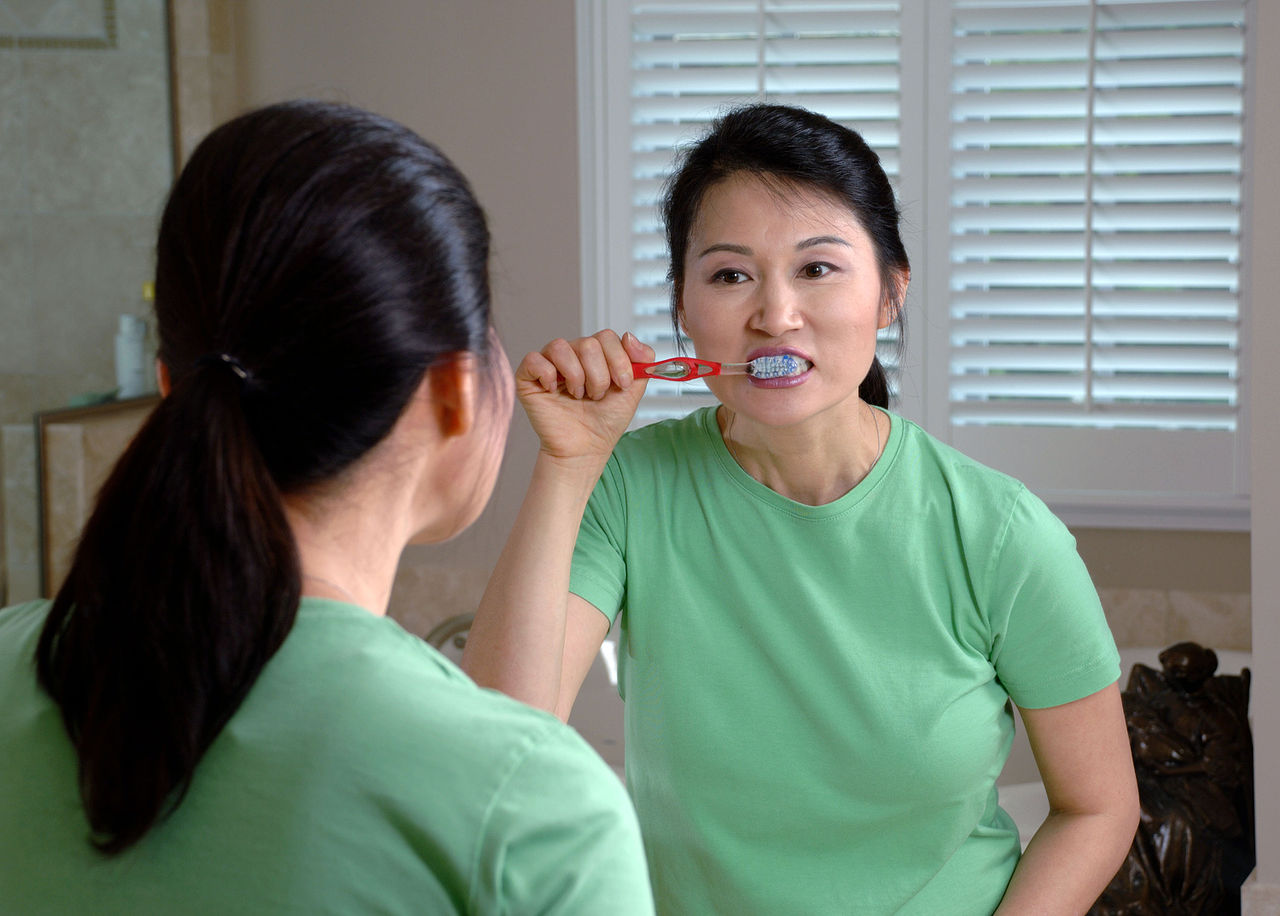Teeth whitening is a cosmetic procedure. This means that it is an elective procedure, rather than something that is necessary for the person’s health. Unfortunately most insurance, even dental insurance, does not cover cosmetic dentistry.
A lack of insurance coverage does not have to rule out whiter teeth. There are things that you can do to lower the costs of teeth whitening.
Avoiding Stains in the First Place
Good oral hygiene minimizes stains, but sometimes teeth stains are unavoidable. Dentists classify discoloration into two types, intrinsic and extrinsic. Intrinsic stains are part of the tooth structure and whitening will not resolve them. Intrinsic stains result from heredity and aging. They might also be caused by too much fluoride in drinking water (which appears as white spots on the teeth) or a high fever during a crucial time when tooth enamel is forming. These intrinsic stains are part of the tooth, and little can be done to remove them.
Extrinsic stains are food, drink, or tobacco stains. For example, coffee and tobacco stain teeth brown. Stains can also be caused by bacteria from poor oral hygiene. The good news about extrinsic stains is that individuals can prevent them through good oral hygiene—and they can usually be removed.
There are two main groups of stain-removal products. At-home products are over-the-counter remedies that range from inexpensive (tooth-whitening toothpaste, rinses, gel strips) to more expensive (home whitening kits). Dentists can also whiten stained teeth. Their options tend to be more expensive, but they achieve longer-lasting results in a shorter amount of time.
Over-the-Counter Products

While saving for the superior whitening treatments offered by a dentist, many individuals try at-home whitening products. Individuals should consult a dentist before trying any home whitening products. This is especially true for patients with sensitive teeth, or teeth restorations including fillings or crowns, dental bridges, or implants. They will be able to advise on what products may work best without damaging existing dental work.
Over the counter whitening products include:
- Toothpaste. These use whitening chemicals and abrasive particles to clean and whiten teeth.
- Mouthwash. Swishing a whitening rinse or mouthwash can help lighten stains.
- Gels and Whitening Strips. Gels are applied directly to the teeth, usually twice each day for up to two weeks. Prices generally range from $10-$50.
Most home products include 10-20% peroxide, which is the chemical agent that whitens teeth. These provide short-term benefits, and the end results vary from brand to brand. Dentists use professional-strength products with higher concentrations of peroxide that whiten better and last longer.
At Home Whitening Kits
Home whitening kits present another popular option. These are bleaching agents in a tray that molds to an individual’s teeth. These usually require a longer application time each day than other DIY options. Kits include two trays for top and bottom teeth. Many require overnight use.
As with any of these over-the-counter whitening products, these whitening kits should be used as directed, as overuse may cause damage to teeth. Home kits usually cost between $40 and $100.
Some dentists offer professional at-home kits that can cost up to $400. Professional at-home kits use a mouthpiece tailored to each individual’s mouth and contain higher concentrations of peroxide than over-the-counter kits.
At the Dentist

There are also whitening options available at the dentist office. These cost more because they work quicker and last longer. Dental whitening procedures cost $650 on average, but many feel the results justify the price. Procedures usually take a total of 60-90 minutes, and patients may need more than one treatment. Dentists use stronger peroxide solutions so teeth remain whitened anywhere from 6 months to 3 years with proper oral hygiene.
Professional in-office whitening follows a standard procedure to ensure lasting brightness:
- The dentist begins with a shade measurement. This allows patients to see how stained their teeth are currently and how much brighter they will be after the procedure. This provides a benchmark for the process.
- The dentist next polishes the teeth with pumice.
- He or she then places a cheek retractor to expose teeth to the bleaching gel.
- The dentist then covers the patient’s eyes, gums, and lips to protect these areas of the face from the bleaching gel.
- He or she then paints resin over the gums, exposing only the teeth to be whitened.
- Finally, the fast-acting gel is applied to the teeth.
- Dentists repeat this procedure for a total of three 15-20 minute bleaching sessions.
- Dentists also may use ultraviolet light to activate the gel. This helps achieve a stronger bond and makes the gel more effective.
- Final whiteness will be achieved 2-6 weeks after the completed procedure.
Dentists usually accomplish all this in a single visit, though they could prescribe at-home whitening trays as well. Every patient’s situation is slightly different, so this basic procedure may vary and additional visits may be necessary to achieve desired teeth whiteness.
Veneers or Bonding
Finally, there are other options for intrinsic stains or stubborn extrinsic stains. Dental veneers and bonding are the most expensive options. They are not covered by dental insurance either, but will restore a brighter smile.
Dental veneers are thin shells applied directly to the stained teeth that match the tooth’s natural color. They are typically made from porcelain or resin that bonds directly to patients’ teeth. They are also a good option to consider for chipped teeth or smaller-than-average teeth. The fewer the veneers, the lower the cost. Generally veneers cost between $925 and $2,500 per tooth. An entire set of veneers typically costs between $10,000 and $40,000. Veneers cost more than any of the bleaching options, but they typically last 10-15 years.
Dental bonding is another cosmetic option, usually used for repairing chipped or broken teeth. In the process, it can make teeth look whiter too. It generally costs $300-$600 per tooth and is a good option for minor repairs.
If a patient’s teeth have imperfections as well as discoloration, either of these dental procedures can fix both problems at once.
Teeth Whitening for Less

Whether patients use over-the-counter whiteners or see a dentist, whitening can be a big investment. Because the process is not covered by insurance, it is helpful to know that there are some ways to bring down the cost:
- Sometimes a professional cleaning is all that is needed to whiten teeth, and patients should start here.
- Find a local dental school. They may offer whitening procedures for less so that students can hone their skills.
- Ask if the dentist offers financing for whitening and other procedures. Many are happy to do so.
- Find out if the dentist ever runs coupons or specials on teeth-whitening. Some offer group discounts for major events (such as a wedding). They might be happy to offer a group rate for your entire bridal party!
Dentists are happy to work with patients to brighten their smiles without breaking the bank.
Thinking of Whiter Teeth?
Unfortunately, teeth whitening is a cosmetic procedure that is not typically covered by insurance. That does not mean you can’t get it, but you might need to save up or try less expensive options—as long as they are safe.
Meanwhile, the best place to start is to talk to your dentist. They can tell you what type of stains you have, and assuming they can be lightened, what will work best.
If you are ready to talk to a dentist about a brighter smile, make an appointment today!


